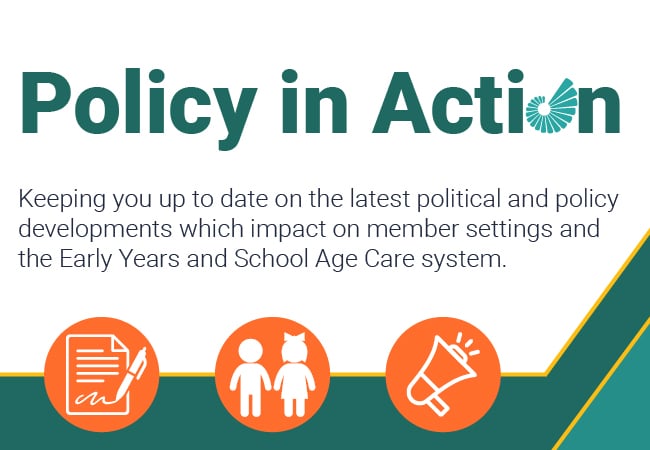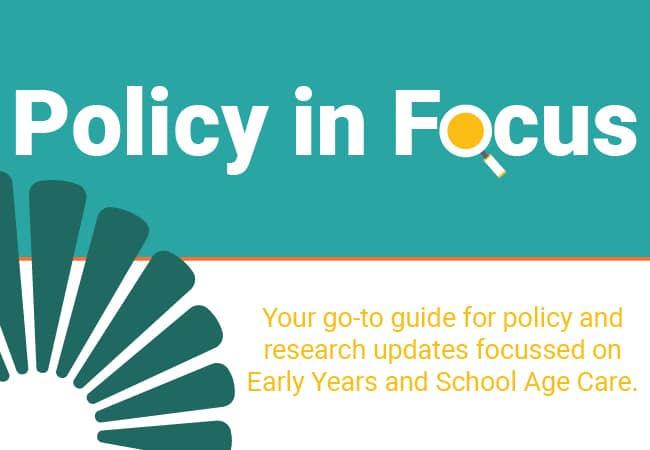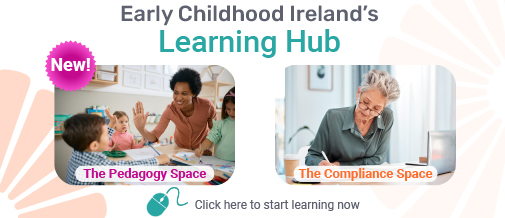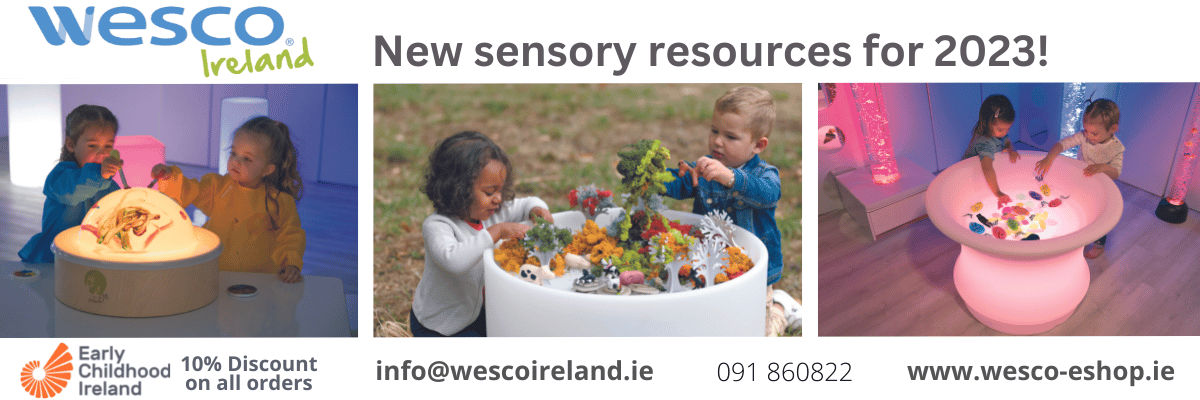Capturing Children’s Voices at Story Time!
Reading and storytelling with children promotes brain development and imagination, teaches children about language and emotions, and strengthens relationships. Dr Mary Roche in her blog ‘Books and stories are important in the early years‘, also wrote about the importance of storytelling and its effect on children’s development.
In this blog we want to highlight the importance of hearing the child’s voice during/after storytelling, as storytelling provides a wonderful opportunity to hear the child’s voice. The child’s voice is a phrase used to describe the real involvement of children. It acknowledges children’s questions, queries and wonder. Taking time to listen and hear what they have to say and show through their body language. This could be described as ‘engaging with children’s voices’, which lies at the heart of consulting with children.
Seeking children’s expression of their meaning, through talk, bodily gestures and actions at story telling time is one way to give voice to children. We know there are many others; ‘The Hundred Languages of Children’ by Loris Malaguzzi for example.
However, in a busy setting with young children seeking their expression of their meaning is not always an easy process. But it is a process and one that does not end when the story ends! Talk or action by children about the story that was just read that day can seep into several other areas of the day or week, through children’s play. In Anne Comerford’s blog ‘I say OOH, and you say AAH‘, long after the story had been read, Anne noticed that if anyone says OOH in the middle of any task, music, dance or play, the children will automatically respond AAH with gusto.
When seeking children’s meaning, care must be taken to capture children’s authentic views, write down what children say verbatim (word for word) as far as possible, in large print exactly as they say it, to ensure we don’t put our adult spin on their words. The challenge here in recording what children say is trying not to be intrusive and trying to keep up with what children say without breaking the flow of children’s ideas. Practice makes perfect and reading with small groups is best! Often children will notice your efforts to capture what they are saying and like real experts they will slow down and give you time to take notes!!
By using a variety of strategies to remain true to the integrity of children’s words, and helping children to express themselves, we can use further questioning (not interrogation), paraphrasing what children might have meant, and checking our own interpretations with children throughout the process; “Am I right in saying you floated above the clouds Bailey?” Clarification with children and breaking down questions for ease of understanding, using language that invites genuine input; “Tell me, what do you think about…, how do you feel about…, what do you like about…, what makes you think that…, what makes you feel that way?, why did that make you laugh so much? what do you think will happen next?” all contribute to attempts to maintain children’s voices without placing our own interpretations on what was heard or observed! Balance listening with questioning, we want to hear what children have to say, that’s the fun bit!!
The use of reflective language in conversations with children can be very effective too – for example, “I heard you say Harry that you have lots of story books at home, is that because you like books so much?” Consider the messages that children convey – not just what they say but how they say it. Attend to their tone, facial expressions, gestures and gaze. Write these down and talk to the children about what you had captured during story time. It is wonderful material to reflect with the children and to share with parents!
However, what is key to successful engagement with children’s voices and your success at storytelling and documentation is being familiar with the story book to begin with – preparation, you don’t have to be an expert in storytelling to get children interested in books, but you do need to know the story line. Books can be chosen by children (preferences) and they can also be chosen by adults and used as provocations to engage children and give them voice! Giving children a voice promotes self-esteem and self-worth, feeling valued plays a large role in how a child learns. As does re-reading favourite books again and again, as long as children are interested. Their understanding changes with their lived experiences, which adds a new dimension to their enjoyment of the book or story.
Loris Malaguzzi, founder of the Reggio Emilia philosophy, wrote a poem called ‘The hundred languages of Children’. In the first part of the poem, he celebrates the many different ways children express themselves; and in the second part, laments schools taking most of these languages away from children.
Early Childhood Ireland would like to hear from you how you capture children’s voices! Contact ktuite@earlychildhoodireland.ie or mcorbett@earlychildhoodireland.ie,









